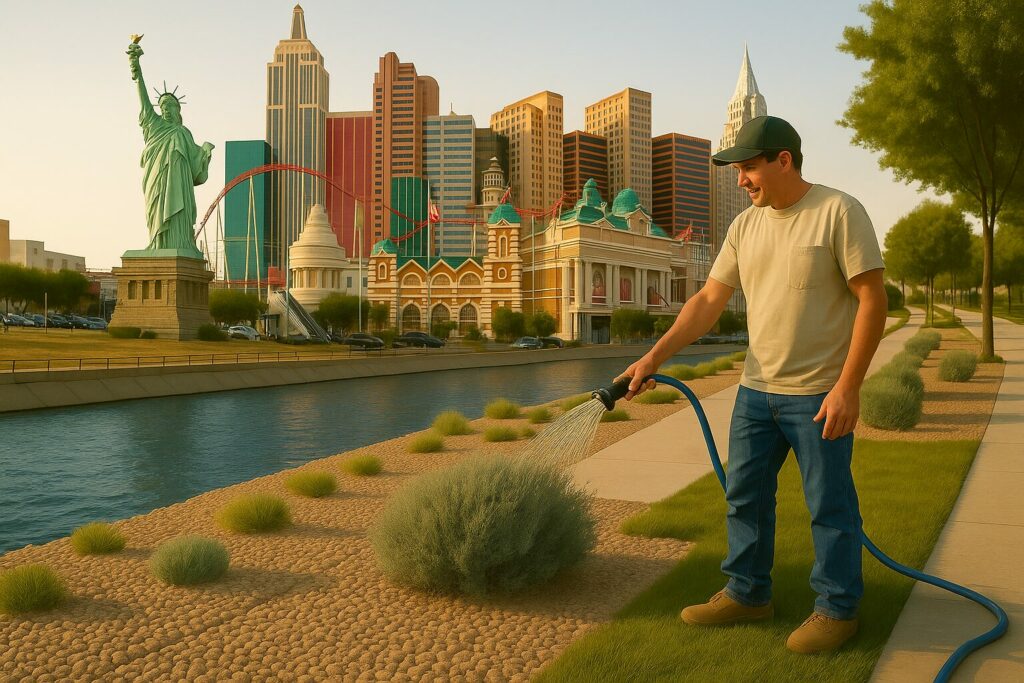
Las Vegas Water Conservation Strategy: The Southern Nevada Water Authority’s Response to Tourism Demands
Ever wondered how Las Vegas, a temple of tourism in the Mojave Desert, balances hotel industry massive needs and community use with the harsh reality of dwindling Colorado River water? 🌵💧 As water conservation in Las Vegas become crucial, the city’s survival hinges on bold moves: mandatory watering schedule, slashing grassy lawns, high-tech leak detection etc… Explore how Vegas bets on water-smart landscapes, smart irrigation, and strict regulations to save billions of gallons yearly… while keeping its iconic fountains flowing. 🌱
Article Takeaways
To meet the water needs of the hotel industry – the city’s economic lifeblood – and not deprive residents of an essential resource, Las Vegas Water Valley District (LVVWD) and Southern Nevada Water Authority (SNWA) have developed an effective strategy and sophisticated measures to preserve the city’s water resources. The main Las Vegas water conservation measures are the following:
- A strict mandatory watering schedule
- Financial helps to replacing grass for native plants
- Promotion of smart irrigation systems, connected to weather data and soil sensors
- Use of an advanced technological leak detection system
- A very high rate of water recycling and reuse in the hotel industry
This article will be updated as often as possible, but for the latest information about Las Vegas water conservation, here are the contact details for the lvvwd (Las Vegas Valley Water District):
lvvwd contact : 702-870-4194 (in-state call) / 800-252-2011 (out-of-state calls) website: https://www.lvvwd.com/
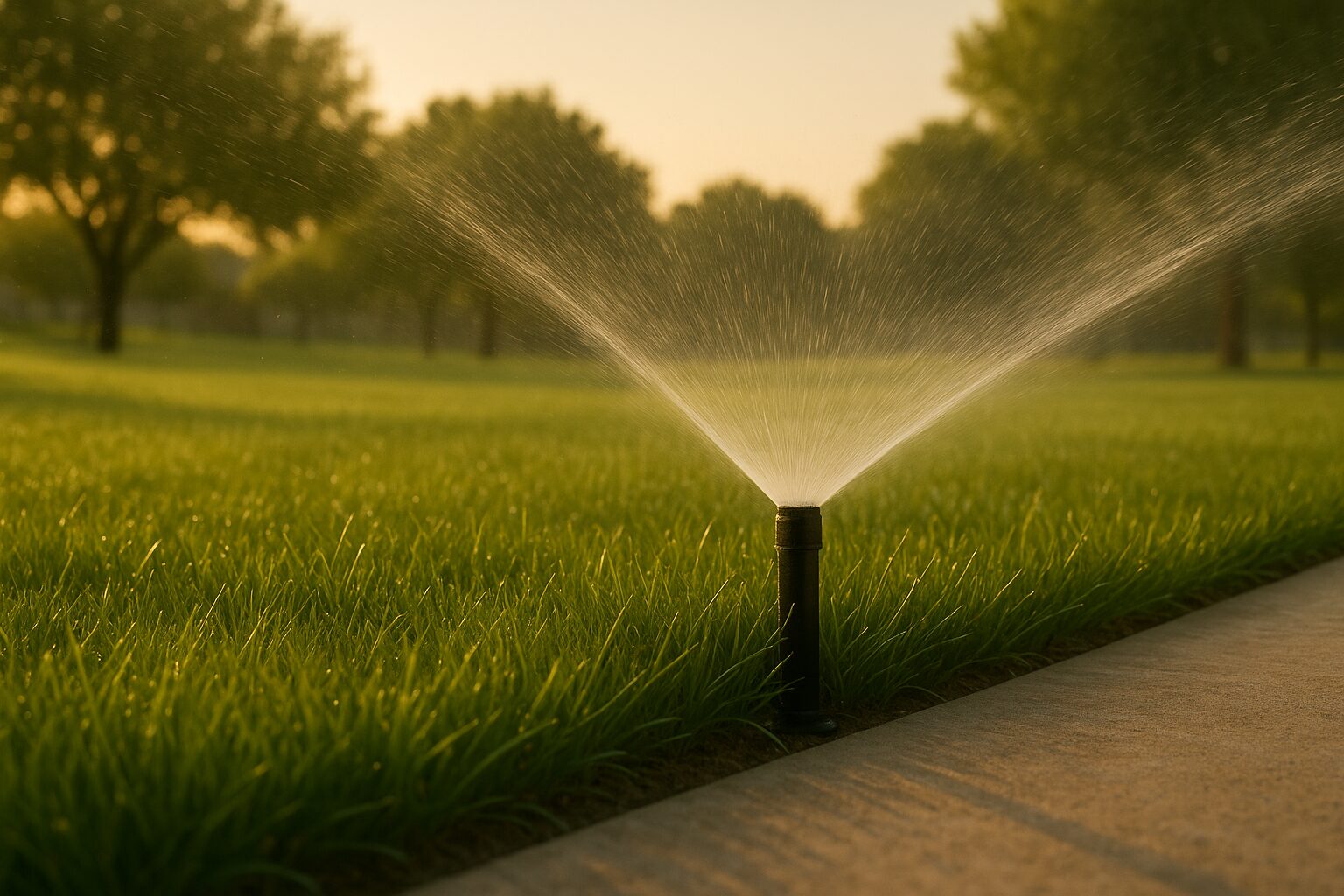
Table of contents
- Innovative Conservation Programs Transforming the Desert City 🚿
- Las Vegas’ Water Crisis: Surviving in the Desert 🌵
- The Colorado River Crisis and Lake Mead’s Declining Levels 💧
- Remarkable Success Despite Population Growth 🌱
- The Future of Water Conservation in Sin City 🏜️
Innovative Conservation Programs Transforming the Desert City 🚿
Mandatory Watering Schedules and Seasonal Restrictions
Las Vegas Valley Water District enforces strict watering rules to cut waste. Therefore Residents get assigned watering days and face fines for violations, especially during peak summer months.

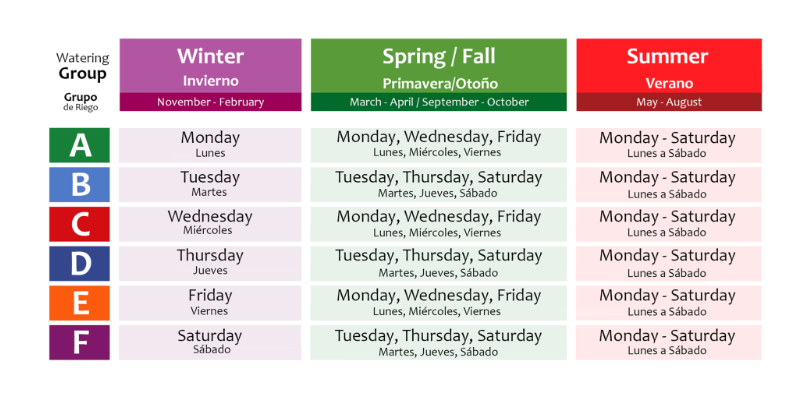
Fines range from $80 to $5,120 depending on meter size and violation history. The district investigates reports and issues citations when necessary.
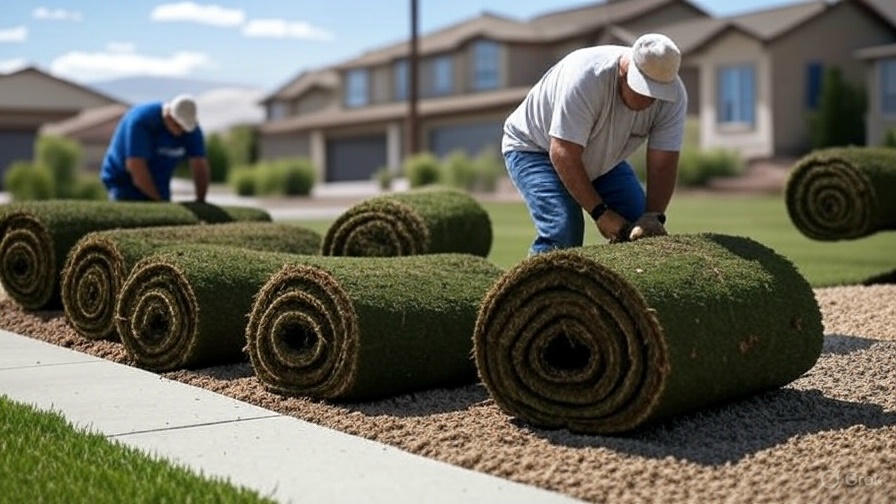
Water Smart Landscapes: From Grass to Desert Xeriscaping
The Water Smart Landscapes program pays $3/sqft (up to 10,000 sqft) for replacing grass with desert plants. Since 1999, this saved 203 billion gallons through turf removal.
Converting to desert landscaping offers multiple benefits:
- Save up to $206/year through water bill reductions and SNWA rebates
- Reduce maintenance by 26 hours/year with drought-resistant plants
- Customize desert aesthetics using native plants, rocks, and mulch
- Qualify for additional rebates on smart irrigation technology
By 2027, non-functional turf faces elimination from commercial properties, golf courses, and community areas. In 2022, Las Vegas banned non-functional turf, a pioneering move detailed in this Climate section article. This includes grass along streets and sidewalks that serves no practical use beyond aesthetics.
Smart Irrigation Systems and Water-Efficient Technologies
Las Vegas promotes smart irrigation controllers that adjust watering using weather data and soil sensors. These technologies optimize water use while maintaining landscape health in desert conditions.
Rebates cover water-efficient indoor fixtures like low-flow toilets and smart leak detectors. These technologies reduce household water use while maintaining functionality for residents and businesses.
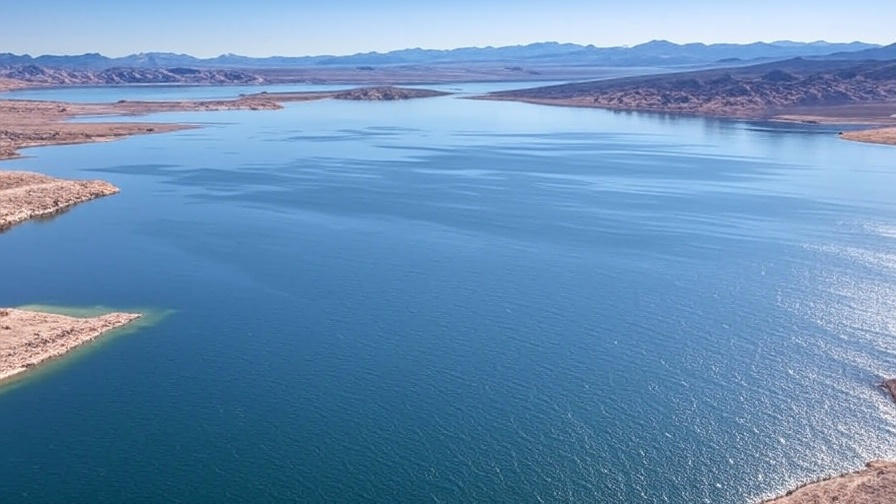
Las Vegas’ Water Crisis: Surviving in the Desert 🌵
Las Vegas, a desert city, depends on the Colorado River for 90% of its water supply 🌵. Thus, Climate change and population growth raise concerns about sustainability. The Southern Nevada Water Authority (SNWA) manages this fragile balance, ensuring every drop counts in the arid Southwest.
Established in 1991, SNWA leads conservation amid a 24-year Colorado River drought. With Nevada’s 1.8% allocation, strict policies and rebates aim to preserve this shrinking resource. Every gallon saved extends Las Vegas’ lifeline in the desert 💧.
The Colorado River Crisis and Lake Mead’s Declining Levels 💧
Las Vegas’ Reliance on Colorado River and Lake Mead
Las Vegas draws 90% of its water from Lake Mead 💧. Nevada’s annual allocation from the Colorado River stands at 300,000 acre-feet. This fragile balance sustains 2.3 million residents and 50 million annual tourists in the desert oasis.
Lake Mead’s water levels have plummeted 160 feet since 2000, creating the iconic « bathtub ring » along its shores 🌵. This stark white mineral deposit marks where water once reached, now exposed by the receding reservoir that supplies 25 million people across seven states.
Climate Change Impact on Water Resources
Rising temperatures reduced snowpack and increased evaporation rates across the Colorado River basin. Warmer winters mean less snow accumulation in mountain ranges that historically fed the river system with meltwater each spring.
Scientists confirm this 24-year drought qualifies as the worst « megadrought » in 1,200 years. Climate projections show Southern Nevada will face hotter, drier conditions that further strain water availability for agriculture, industry, and households.

Diversifying Water Supplies for the Future
Las Vegas maintains groundwater banking programs to store excess Colorado River water underground. These reserves protect against shortages while the Southern Nevada Water Authority explores potential desalination projects along the California coast.
The city recycles 85% of indoor water use 💧. Treated wastewater flows through the Las Vegas Wash back to Lake Mead, maintaining the river system while earning the city water withdrawal credits for continued use.
Remarkable Success Despite Population Growth 🌱
Water Savings Achievements and Gallons Saved
Las Vegas slashed water use by 48% over 20 years, serving 750,000 more residents without draining Lake Mead 💧. Smart policies and community action prove sustainability works in the desert.
| Category | Conservation Achievement | Timeframe |
|---|---|---|
| Total Water Use Reduction | 48% decrease | 2004-2024 |
| Per Capita Water Use | 55% reduction | Since 2002 |
| Total Water Savings | 38 billion gallons saved | Compared to 2002 |
| Turf Replacement Savings | 203 billion gallons | Since 1999 |
| Population Growth | +750,000 residents | While reducing water use |
| Golf Course Water Reduction | 35% decrease | 2024 compared to earlier budgets |
| Water Recycling Rate | 99.9% of indoor water | Currently |
| Leak Detection Savings | 290 million gallons | Since 2004 program |
Since 1999, Las Vegas has halved per capita water use, saving 203 billion gallons through turf removal and smart policies, per ProPublica. Today, 99.9% of indoor water gets recycled back to Lake Mead 💧.

Balancing Tourism Industry Needs with Water Conservation
Las Vegas Strip resorts recycle 70-80% of water in fountains and pools. Hotels use non-potable well water for iconic displays while reducing indoor consumption with smart fixtures.
Major resorts use treated reclaimed water for pools and fountains instead of Lake Mead. For example, The Bellagio’s iconic display runs on well water, while 99.9% of all indoor water gets recycled back to the river system 💧. With extreme water scarcity, the tourism industry in Las Vegas must lead the way in implementing eco-friendly practices in hospitality.
Golf Course Water Management in the Desert
Golf courses cut water budgets from 6.3 to 4 acre-feet/year under SNWA rules. Strict limits and rebates for turf reduction drive this 35% decrease since 2024 🏌️.
Over 900 acres of golf course turf replaced with native plants saved 2 billion gallons. Moreover, Courses now use soil sensors, drip irrigation, and reclaimed water credits to monitor usage and prevent waste 🌵.
The Future of Water Conservation in Sin City 🏜️
New Water Conservation Initiatives and Regulations
Las Vegas bans non-functional turf on commercial properties by 2027. Septic conversions will connect 20,000 properties to centralized systems, reducing groundwater contamination and improving water quality. Stricter landscape rules limit new developments to 50% grass coverage.
SNWA prepares for potential Colorado River cuts by expanding turf removal rebates. If Lake Mead drops below 1,025 feet, emergency measures could restrict residential watering days and mandate industrial water efficiency upgrades to protect the desert city’s lifeline
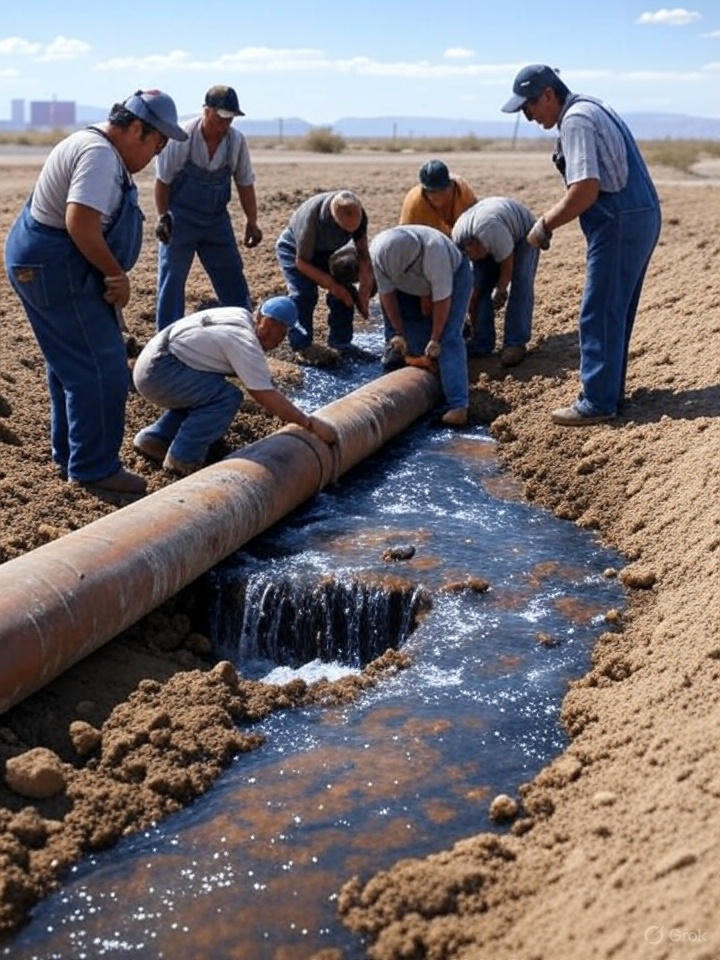
Advanced Leak Detection and Water Loss Prevention
Las Vegas Valley Water District uses 13 acoustic sensors on major pipes. Smart meters track real-time water flow, detecting leaks before they waste millions of gallons in the arid environment 🌵.
In addition, inhabitants are fostered to take an active part in water wastage detection, by through the implementation of simple yet consistent controls. Common Household Water Leaks and How to Detect Them:
- Check toilets with food coloring – if color appears without flushing, you have a leak
- Inspect irrigation systems for misting or pooling water during scheduled runs
- Monitor water bills for unexplained spikes indicating underground pipe leaks
- Listen for running water sounds when no fixtures are in use
LVVWD’s leak detection programs saved 290 million gallons since 2004. Their EchoShore®-TX system on Las Vegas Boulevard uses AI and AT&T connectivity to monitor 3 miles of aging pipes, preventing catastrophic failures before they waste desert resources 💧.
Las Vegas’ water-saving strategies—like swapping grass for desert-friendly landscapes 🌵 and smart irrigation—are fighting Lake Mead’s decline 💧. By cutting waste and embracing rebates, the city grew while using less water. Your yard, hotel, or golf course (yes, even those!) can help keep Vegas green without draining the desert 🌱. The future’s smart: save every drop now, or thirst later.
Efficient Las Vegas water conservation measures should be taken as an example in major tourist destinations, as the problem of drought in certain tourist areas is becoming problematic in many destinations around the world.
Q/A About Las Vegas Water Conservation
What will happen if Lake Mead dries up?
If Lake Mead dries up, the consequences would be dire. The Hoover Dam, powered by Lake Mead, would no longer be able to supply electricity to hundreds of thousands of homes because there wouldn’t be enough pressure to turn the turbines. That’s a big problem, mate! ⚡
Lake Mead supplies water to nearly 40 million Americans, as well as agriculture and industries in several states. Lower water levels reduce the efficiency of the turbines, and if the level reaches 289 meters above sea level, the dam will no longer be able to produce electricity. Not a good scenario, eh? 💧
Is Las Vegas in danger of running out of water?
While Las Vegas has implemented significant water conservation measures and has successfully reduced its consumption despite population growth, the city isn’t immune to the risk of water shortages. Las Vegas relies on the Colorado River for its water supply, and the river is drying up due to persistent drought and climate change. 🌵
Las Vegas has decreased its water consumption by nearly a third over the last two decades, despite a population increase of about 50%. The city recycles almost all water consumed indoors, which is treated and reinjected into Lake Mead. However, water used outdoors, especially for irrigation, is lost and not returned to the system. More needs to be done! 🌱
Who are the biggest water wasters in Las Vegas?
Outdoor water use is considered lost because it’s not returned to Lake Mead. Planting grass is prohibited for all new buildings, including private residences, as watering it is considered wasteful. For existing gardens, the city offers to buy back the grass to replace it with local plants, the watering of which is strictly limited. Turf is the enemy! 🚫🌿
The city has established a water police to penalize leaks and abuses, and can cut off water to large consumers. Part of the water is also lost through space cooling systems. Every drop counts in this desert climate. 💧
How to save Lake Mead?
To save Lake Mead, several measures are being considered and implemented. An agreement has been reached between seven states and the U.S. government to reduce water consumption from the Colorado River. California, Nevada, and Arizona, large consumers of Colorado fresh water, will decrease their consumption by 13%. In exchange, the federal government will financially compensate this effort, especially for farmers and cities. 🤝
The federal government plans to spend $1.2 billion to compensate the efforts of the states, particularly towards farmers and cities. Lake Mead is fed by the Colorado River, whose level is historically low due to drought. Better water management of the river is essential to maintain the lake’s level. It’s a team effort! 💧
What are the alternatives to Colorado River water for Las Vegas?
Las Vegas has implemented several measures and alternatives to reduce its dependence on Colorado River water. These measures include a water police force that patrols to identify and penalize water wastage, such as excessive watering or leaks. First-time offenders receive a warning, while repeat offenders are subject to fines. 👮♂️
The city also offers financial compensation for replacing lawns with water-efficient alternatives, such as drip-irrigated plants. On the Strip, fountains and canals use non-potable water from private wells. Smart moves all around! 🌱
